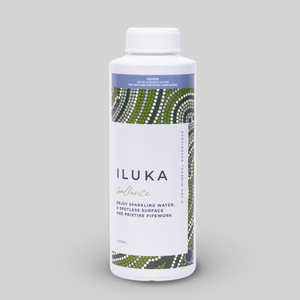‘Switching off’ your spa pool, whether for a short term or an entire season, demands specific preparation to ensure its longevity and optimal functioning upon your return. Correctly preparing your spa for hibernation is crucial to avoid potential damage to its components. This guide will walk you through two options for hibernation.
- Attended Hibernation - (Keeping power on) - Highly Recommended
- Unattended Hibernation - (Switching off)
Before outlining the process for each option, it’s important to understand why it’s recommended to keep your spa pool running if possible.
Why it's Best to Keep Your Spa Running:
Just like moving parts in a car that need regular use to stay functional, the pumps in a spa require consistent operation. Similar to how a car left idle for an extended period might lead to stiffening belts and seized bearings, the pumps and components in a spa benefit from regular operation. By keeping power to the spa, the pumps self-lubricate and prevent damage to pipework, especially in colder climates.
What about Running Costs and Managing the Water?
Because the spa won’t be being used by bathers, it no longer needs to be heated. Simply lowering the temperature below ambient not only conserves energy but also reduces heating costs significantly. Maintaining a minimal temperature setting saves on unnecessary heating expenses while helping avoid any damage by engaging the pumps periodically as discussed earlier.
Balancing and treating the water during this period of non-use becomes notably easier. Since the spa is not used, bacteria infiltration is rare and only a small amount of sanitiser is required. The absence of users also prevents organics from getting into the water like moisturizers, sunscreen and body oils, therefore creating a more stable environment for balanced water. This reduces the need for frequent adjustments and maintenance, making for stress-free hibernation.
How to Prepare Your Spa for 'Attended Hibernation'.
-
Reduce the temperature
Set the spa’s set temperature as low as it can go (this should be around 10 degrees). Your spa may take several days to a week to lose its warmth and will probably hover around 15-20 degrees celcius, so little to no heating will take place.
-
Consider applying a conditioner
By using a spa conditioner such as Iluka Brilliance in your water, maintenance for attended hibernation becomes significantly easier.
-
Shock dose
Shock dose fornightly with Spa Chlor. Use half the normal fortnightly amount (specific to your spa pools volume). Always run the jets with cover off for at least 1 hour after shocking.
-
Keep on top of maintenance
Continue to follow the weekly, fortnightly and monthly Maintenance Checklists. Where possible, attempt to air the spa by opening the cover for an hour at least once a week.
How to Prepare Your Spa for 'Unattended Hibernation'.
-
Clean Filters & Remove Headrests
Remove and clean filters thoroughly as per filter cleaning instructions. If they are still reasonably new, store them in a dry location once cleaned. If the filters are older than 2 months, it’s best to dispose of them and purchase new filters when you fill it up again. Remove the headrests and clean them thoroughly, store them in a dry, safe location.
-
Turn OFF Spa Pool
Completely turn off the spa pool at your isolation switch or mains board.
-
Clean Filters & Remove Headrests
Remove and clean filters thoroughly as per filter cleaning instructions. If they are still reasonably new, store them in a dry location once cleaned. If the filters are older than 2 months, it’s best to dispose of them and purchase new filters when you fill it up again. Remove the headrests and clean them thoroughly, store them in a dry, safe location.
-
Use a Pipe Cleaner
Clense out the spa pipes by using a heady duty pipe cleaner such as Iluka Purge.
-
Drain the Water
Drain the water out of the spa pool via the external drain valve.
-
Drain pipes via Barrel Unions
Open up the cabinets surrounding the spa pool and locate the barrel unions at the controller unit / heater and the pumps. Loosen (strop wrench may be required) the barrel unions either side of the component to drain excess water from the surrounding pipes. Put down a towel if required, to soak up water. Tighten the unions back up once finished.
-
Blowout Pipes
Climb inside the spa pool with a ‘Wet-Vac’. Remove the jet pieces and place the vacuum nozzle into the jet body to suck water directly out of the pipe. Not every jet piece needs to be attended to, aim for 3-4 per seat. Other pipes to suck water from are the internal drain valve and the circulation jet mounted on the side of the spa pool acrylic (usually near the topside control panel).
-
Wipe Down Spa Pool
Remove any excess build up of water from inside the spa pool and wipe the acrylic shell down completely with a microfibre cloth and mild all-purpose antibacterial spray.
-
Secure Cover
Place the spa pool cover on securely and lock with clips. Cover the entire spa pool with a tarp or ‘spa pool winter cover’ for the best long-term protection.
Conclusion
Leaving a spa unattended during hibernation, especially without regular oversight, can present challenges, particularly in prolonged absences where consistent maintenance might be impractical. However, adopting a proactive approach and implementing the suggested measures can significantly contribute to preserving the spa's health and functionality.



